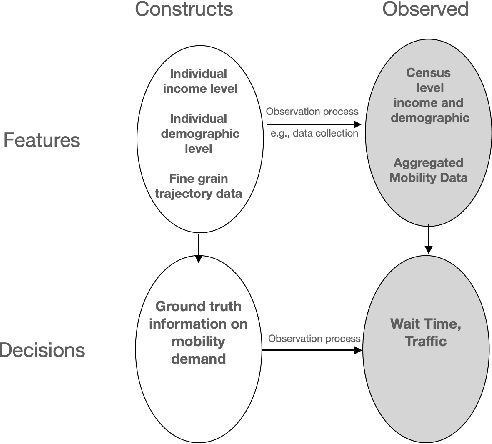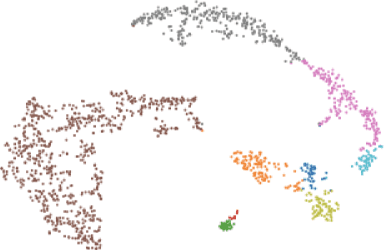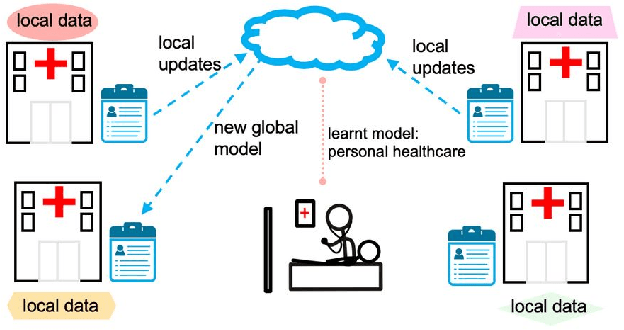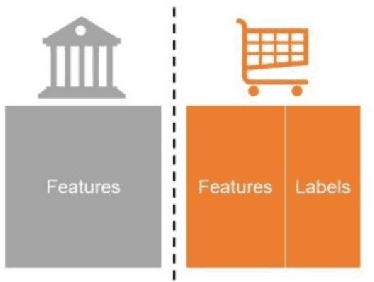Reza M. Parizi
Safeguarding connected autonomous vehicle communication: Protocols, intra- and inter-vehicular attacks and defenses
Feb 06, 2025



Abstract:The advancements in autonomous driving technology, coupled with the growing interest from automotive manufacturers and tech companies, suggest a rising adoption of Connected Autonomous Vehicles (CAVs) in the near future. Despite some evidence of higher accident rates in AVs, these incidents tend to result in less severe injuries compared to traditional vehicles due to cooperative safety measures. However, the increased complexity of CAV systems exposes them to significant security vulnerabilities, potentially compromising their performance and communication integrity. This paper contributes by presenting a detailed analysis of existing security frameworks and protocols, focusing on intra- and inter-vehicle communications. We systematically evaluate the effectiveness of these frameworks in addressing known vulnerabilities and propose a set of best practices for enhancing CAV communication security. The paper also provides a comprehensive taxonomy of attack vectors in CAV ecosystems and suggests future research directions for designing more robust security mechanisms. Our key contributions include the development of a new classification system for CAV security threats, the proposal of practical security protocols, and the introduction of use cases that demonstrate how these protocols can be integrated into real-world CAV applications. These insights are crucial for advancing secure CAV adoption and ensuring the safe integration of autonomous vehicles into intelligent transportation systems.
Uncovering Promises and Challenges of Federated Learning to Detect Cardiovascular Diseases: A Scoping Literature Review
Aug 26, 2023Abstract:Cardiovascular diseases (CVD) are the leading cause of death globally, and early detection can significantly improve outcomes for patients. Machine learning (ML) models can help diagnose CVDs early, but their performance is limited by the data available for model training. Privacy concerns in healthcare make it harder to acquire data to train accurate ML models. Federated learning (FL) is an emerging approach to machine learning that allows models to be trained on data from multiple sources without compromising the privacy of the individual data owners. This survey paper provides an overview of the current state-of-the-art in FL for CVD detection. We review the different FL models proposed in various papers and discuss their advantages and challenges. We also compare FL with traditional centralized learning approaches and highlight the differences in terms of model accuracy, privacy, and data distribution handling capacity. Finally, we provide a critical analysis of FL's current challenges and limitations for CVD detection and discuss potential avenues for future research. Overall, this survey paper aims to provide a comprehensive overview of the current state-of-the-art in FL for CVD detection and to highlight its potential for improving the accuracy and privacy of CVD detection models.
Fairness in Federated Learning for Spatial-Temporal Applications
Jan 20, 2022


Abstract:Federated learning involves training statistical models over remote devices such as mobile phones while keeping data localized. Training in heterogeneous and potentially massive networks introduces opportunities for privacy-preserving data analysis and diversifying these models to become more inclusive of the population. Federated learning can be viewed as a unique opportunity to bring fairness and parity to many existing models by enabling model training to happen on a diverse set of participants and on data that is generated regularly and dynamically. In this paper, we discuss the current metrics and approaches that are available to measure and evaluate fairness in the context of spatial-temporal models. We propose how these metrics and approaches can be re-defined to address the challenges that are faced in the federated learning setting.
Communication Efficiency in Federated Learning: Achievements and Challenges
Jul 23, 2021



Abstract:Federated Learning (FL) is known to perform Machine Learning tasks in a distributed manner. Over the years, this has become an emerging technology especially with various data protection and privacy policies being imposed FL allows performing machine learning tasks whilst adhering to these challenges. As with the emerging of any new technology, there are going to be challenges and benefits. A challenge that exists in FL is the communication costs, as FL takes place in a distributed environment where devices connected over the network have to constantly share their updates this can create a communication bottleneck. In this paper, we present a survey of the research that is performed to overcome the communication constraints in an FL setting.
A Survey of Machine Learning Techniques in Adversarial Image Forensics
Oct 19, 2020



Abstract:Image forensic plays a crucial role in both criminal investigations (e.g., dissemination of fake images to spread racial hate or false narratives about specific ethnicity groups) and civil litigation (e.g., defamation). Increasingly, machine learning approaches are also utilized in image forensics. However, there are also a number of limitations and vulnerabilities associated with machine learning-based approaches, for example how to detect adversarial (image) examples, with real-world consequences (e.g., inadmissible evidence, or wrongful conviction). Therefore, with a focus on image forensics, this paper surveys techniques that can be used to enhance the robustness of machine learning-based binary manipulation detectors in various adversarial scenarios.
* 37 pages, 24 figures, Accepted to the Journal Computer and Security (Elsevier)
A Federated Approach for Fine-Grained Classification of Fashion Apparel
Aug 27, 2020



Abstract:As online retail services proliferate and are pervasive in modern lives, applications for classifying fashion apparel features from image data are becoming more indispensable. Online retailers, from leading companies to start-ups, can leverage such applications in order to increase profit margin and enhance the consumer experience. Many notable schemes have been proposed to classify fashion items, however, the majority of which focused upon classifying basic-level categories, such as T-shirts, pants, skirts, shoes, bags, and so forth. In contrast to most prior efforts, this paper aims to enable an in-depth classification of fashion item attributes within the same category. Beginning with a single dress, we seek to classify the type of dress hem, the hem length, and the sleeve length. The proposed scheme is comprised of three major stages: (a) localization of a target item from an input image using semantic segmentation, (b) detection of human key points (e.g., point of shoulder) using a pre-trained CNN and a bounding box, and (c) three phases to classify the attributes using a combination of algorithmic approaches and deep neural networks. The experimental results demonstrate that the proposed scheme is highly effective, with all categories having average precision of above 93.02%, and outperforms existing Convolutional Neural Networks (CNNs)-based schemes.
 Add to Chrome
Add to Chrome Add to Firefox
Add to Firefox Add to Edge
Add to Edge